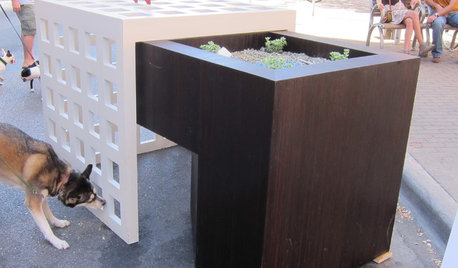My soil report, any comments?
olreader
10 years ago
Related Stories

GARDENING GUIDESHow to Pick a Mulch — and Why Your Soil Wants It
There's more to topdressing than shredded wood. Learn about mulch types, costs and design considerations here
Full Story
KITCHEN DESIGNSpecial Report: Kitchen News from Cologne
Blended Kitchen-Living Rooms, Super-Skinny Counters and Hidden Appliances Are Headed This Way
Full Story
Special Report: Interior Design News From Cologne
Take a Photo Tour of the Latest Furniture Innovations Headed Our Way
Full Story
GARDENING GUIDESGardening Solutions for Heavy Clay Soils
What’s a gardener to do with soil that’s easily compacted and has poor drainage? Find out here
Full Story
GARDENING GUIDESHow to Stop Worrying and Start Loving Clay Soil
Clay has many more benefits than you might imagine
Full Story
GARDENING GUIDESInvite Cellophane Bees to Your Garden by Providing Patches of Bare Soil
Look for cellophane bees (Colletes) pollinating flowering trees and shrubs in U.S. gardens this spring
Full Story
GARDENING GUIDESHouzz TV: Make a Worm Bin for Rich Soil and Happy Plants
A worm-powered compost bin that can fit under a sink turns food scraps into a powerful amendment for your garden. Here’s how to make one
Full Story
GARDENING GUIDES10 Solutions for Soggy Soil
If a too-wet garden is raining on your parade, try these water-loving plants and other ideas for handling all of that H2O
Full Story
PETSDoghouses Worth a Wag: Report From Barkitecture 2011
Annual fundraiser sniffs out the best — and quirkiest — in Austin doghouse design
Full Story
DECORATING GUIDESSpecial Report: Design News from Toronto
See playful color, fur pendants, ornate chandeliers, dark wood and more at the 2011 Toronto Interior Design Show
Full StoryMore Discussions









olreaderOriginal Author
glib
Related Professionals
Bellflower Landscape Architects & Landscape Designers · Newcastle Landscape Architects & Landscape Designers · Canton Landscape Contractors · Salem Landscape Contractors · Brunswick Landscape Contractors · Dedham Landscape Contractors · Florham Park Landscape Contractors · Glendale Heights Landscape Contractors · Lexington Landscape Contractors · Mission Bend Landscape Contractors · Pomona Landscape Contractors · San Bruno Landscape Contractors · Soddy Daisy Landscape Contractors · The Villages Landscape Contractors · Gulf Gate Estates Tree Servicesalan haigh
drew51 SE MI Z5b/6a
alan haigh
olreaderOriginal Author
drew51 SE MI Z5b/6a
Fascist_Nation
drew51 SE MI Z5b/6a
alan haigh
steve333_gw
milehighgirl
Beeone
alan haigh
Greg
Natures_Nature
olreaderOriginal Author